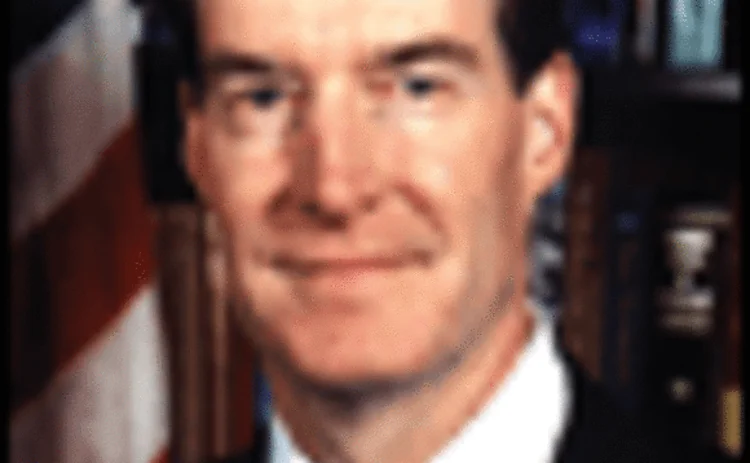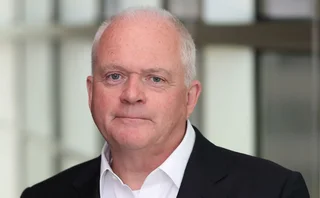
Rethinking policy
A US court in May ruled that United Airlines could terminate its employee pension plan obligations, handing responsibility for the schemes to the Pension Benefit Guaranty Corporation. It has strengthened calls for a rethink on pension policy. By Duncan Wood

When a Chicago bankruptcy court ruled on May 10 that United Airlines could walk away from pension plan obligations worth a total of $16.8 billion, it was approving the biggest corporate pension default in US history. The decision also injected fresh urgency into an ongoing political debate about how to reform the pension system in the US and, in particular, how to ensure the long-term health of the Pension Benefit Guaranty Corporation (PBGC), the government agency charged with making good on companies' broken pension promises.
The PBGC funds itself through the premiums it charges to pension fund sponsors, enabling it to act as the defined benefit system's insurer. That's the idea, anyway. In recent years, a rash of defaults combined with low interest rates and a drop in equity values has left the PBGC nursing a deficit of $23.3 billion and third-party estimates suggest the deficit will swell to $78 billion by 2021.
Bradley Belt, the PBGC's Washington-based executive director, says the only way to avoid a bail-out is for the system to be reformed. "It's my fervent belief that structural fundamental changes of the pension insurance programme are critically necessary to protect workers and retirees, to protect companies that have acted responsibly, and also to protect the taxpayer from ever being called upon to rescue the system, as was the case with the savings and loan crisis some 15 years ago."
The savings and loan (S&L) analogy is not used lightly in the US. The total cost of the crisis to the taxpayer has been put at $153 billion by one federal banking regulator, but it has become a standard reference point in the debate about the PBGC.
"Right now, there's a great deal of concern that the PBGC is going to be the next S&L crisis – that it will require a taxpayer bail-out," says Douglas Elliott, president of the Center on Federal Financial Institutions (Coffi), a Washington-based think-tank.
These fears have prompted frenetic activity on Capitol Hill. In the week beginning June 6 alone, five different House or Senate committees held hearings on pension reform as politicians tried to size up the threat facing the system. The Bush administration proposed a comprehensive reform package advocating an element of risk-based pricing in February this year, and it's easy to imagine the S&L comparisons giving the current president some sleepless nights – it was his father who had to deal with the S&L bail-out shortly after being elected in 1989.
United's pension default starkly illustrates the PBGC's problems. The airline's $16.8 billion pension liabilities were backed by $7 billion in assets, leaving a $9.8 billion funding gap, according to the agency's figures. Not all of United's pension obligations were guaranteed by the PBGC, but the agency still took on a total deficit of around $6.6 billion.
This is the largest deficit the PBGC has ever had to absorb, but it's far from being the only big plan to collapse while underfunded (see table A). In February this year, the PBGC assumed responsibility for two plans run by US Airways, to add to a third plan that had terminated in 2003. In total, the PBGC took on $3 billion in deficits from the US Airways plans. Also in 2003, the collapse of Bethlehem Steel left the PBGC with a $3.7 billion deficit.
These big defaults have contributed to a dramatic reversal in the agency's fortunes. At the end of 2000, as the stock market bubble started to deflate, the PBGC was sitting pretty with a surplus of $9.7 billion. By the end of 2002, the PBGC had slipped into a $3.6 billion deficit, which has mushroomed each successive year, with an increase in corporate bankruptcies leaving a series of underfunded pension plans on the PBGC's doorstep.
The PBGC's Belt says corporate pension plans were hit by a double-whammy. Throughout the 1990s, the equity market's long bull-run persuaded many sponsors to relax their investment policies, taking on increasing amounts of equity exposure. At the same time, he says, many pension plans were piling up significant duration risk by investing in short-term fixed income to cover their long-term obligations.
"The system had a lot of exposure to changes in equity prices and changes in interest rates. When asset prices and interest rates started to fall in tandem in 2000, it had the predictable consequence of dramatically increasing pension underfunding," he says.
At the end of 2000, there were 221 pension plans in the US that were underfunded by $50 million or more. As of September 30, 2004, that number had risen more than fivefold to 1,108. In total, the PBGC says, these plans are underfunded to the tune of $353.7 billion.
Not all these plans are going to be terminated, of course. A research paper published by Goldman Sachs in April this year points out that "many individual plans are in good shape and others, even those that are currently underfunded, are sponsored by well-run companies with strong balance sheets that should be able to fulfil their obligations to current and future retirees".
A more useful measure of the risks facing the PBGC is the amount of underfunding among plans with financially weak sponsors (what the agency calls 'reasonably possible' terminations), and these numbers have also risen. In 2002, the PBGC estimated that there was a total of $35 billion in underfunding among plans backed by companies with sub-investment-grade credit ratings. In 2004, that total had climbed to $96 billion, and it will swell further when the recent downgrades of Ford and General Motors are factored in.
The most immediate threat to the PBGC could come from two more ailing airlines – Delta and Northwest. Both are struggling as a result of the same confluence of difficulties – namely, falling passenger numbers and high jet fuel prices – that laid out United and US Airways, and the expectation among some observers is that Delta and Northwest could be tempted to accept bankruptcy as the price they have to pay to free themselves of their pension liabilities.
"Normally, if you walk away from billions of dollars in obligations, someone is going to be extremely annoyed with you," says Coffi's Elliott. "That's mitigated in this case because the PBGC steps forward. If you're in financial distress and there's a process whereby you can transfer some of your liabilities to a government agency, that's very attractive."
Gary Ford, managing principal at the Washington-based Groom Law Group, discounts the likelihood of such strategic bankruptcies. Ford was the PBGC's general counsel from 1987 to 1989, a period that saw the agency embroiled in a lengthy legal battle with the now-defunct LTV Steel after it announced in 1986 that it would be filing for bankruptcy protection with the purpose of offloading its pension obligations on to the PBGC. The case prompted Congress to change the rules. Now, says Ford, a company has to be able to "prove to the bankruptcy court that there is no other option – that it's a choice between terminating the plan and liquidating the company".
Lawyers for United Airlines were able to point to $3.2 billion in pension contributions that the company would have faced over the next five years, and that convinced the judge, he says. Other companies have been refused permission to terminate their plans.
Whatever the next few years brings in terms of plan failures, there is no prospect of the PBGC being unable to pay benefits, says Belt. The agency may have $62.3 billion in liabilities, but it also has $39 billion in assets. "We have the ability to make good on pensions promises to the million-plus individuals we're now responsible for, for some period of time yet. But we clearly do not have – without changes to the law – the ability to make good on those obligations over the long term."
It's this long-term threat to the PBGC's ability to act as a pension system backstop that has lit a fire under politicians in the US. Coffi's Elliott says he spends a lot of time talking to members of Congress and their staff. He feels that pension reform "has become a hot political issue. We need a policy response now. And there will be one. There will be pension legislation this year." But what will it look like?
The Bush administration plan would affect the PBGC most directly by increasing the premiums the agency receives and introducing an element of risk-based pricing. As things stand, the PBGC is funded primarily by insurance premiums. Every pension plan sponsor pays a $19 annual flat-rate premium per plan participant, while every sponsor with an underfunded plan has to contribute an additional variable-rate premium of $9 per $1,000 of underfunding. The Bush proposals would raise the flat-rate premium to $30 per participant, and would amend the variable-rate premium so it is levied on sub-investment-grade companies, rather than those with underfunded plans. In brief, the argument is that everyone should pay more and those companies that are more likely to default on their obligations should pay an additional slice on top.
An alternative to the Bush reforms was put forward by John Boehner, the chairman of the House Education and Workforce Committee, on June 9. Gordon Latter, senior pensions strategist at Merrill Lynch in New York, says the bill shows the fingerprints of business and labour lobbyists. "Boehner is basically a watered-down version of an earlier proposal. There are no real changes in there relative to the current system, and it's hard to say that the PBGC would be better off today if these rules had been in place."
Attempts by pension plan sponsors and participants to secure a softer reform package are expected to continue, and the eventual shape of reforms will depend on who has the most persuasive argument – those who argue that the sky is falling or those who argue that the situation is not yet critical.
Janice Gregory, vice-president at the Erisa Industry Committee (Eric), a Washington-based trade association, which counts 120 of the largest pension plan sponsors as its members and lobbies policy-makers on their behalf, falls into the latter camp. She's particularly incensed by reform advocates who compare the PBGC's situation to the S&L crisis.
"The S&L analogy is a false one. The PBGC is paying out benefits over 20 to 40 years and, unlike a bank or an S&L, no-one can walk in and demand their money immediately. This idea that there's going to be a sudden collapse is just fallacious and it shouldn't be used."
The PBGC's Belt has heard this complaint before. "The only argument that's left out there to support the claim that reform is not needed is the one that goes, 'well, gee, the PBGC isn't facing a liquidity crisis'," he says. "Every time we take on a plan, we get to keep the plan's assets. That gives us the ability to pay our liabilities over the near term, but we're also digging a very deep hole at the same time."
Opponents of reform argue that if there's no liquidity crisis, there's no need to rush. Eric's Gregory says any reform plan first needs to consider how long the PBGC could continue paying benefits under the status quo. "Unfortunately, the numbers the PBGC puts out are virtually useless in answering that question," she says.
According to Gregory, the PBGC's figures – particularly those dealing with expected future liabilities – are "snapshots with inflated numbers", which "scare people unnecessarily". As an example, she refers to the agency's figures for total underfunding among plans with at least a $50 million funding gap. For 2003, the figure was $279 billion. As of September 30 last year, the PBGC estimated that the total had grown to $353.7 billion.
"It paints a picture of a greatly worsening situation," says Gregory. But she claims that the jump was actually the result of a change in interest rates used in the PBGC's calculations.
Interest rates are critical in determining liabilities. As rates fall, it implies a lower rate of return on the plan's assets – if returns fall, liabilities rise. Gregory says this dynamic has been used by the PBGC to make plan underfunding look worse than it actually is. "The entire change from $279 billion to $354 billion is completely and solely attributable to the fact that the PBGC lowered its rates between the end of 2003 and the end of 2004," she contends.
The PBGC's Belt says he doesn't know the different components that resulted in the reported increase in underfunding, and admits that "it may be primarily attributable to a continued decline in interest rates – but in terms of funding gaps there's a lot going on there apart from changes in interest rates".
Eric asked the US Academy of Actuaries to work out how long the PBGC's assets would enable it to continue paying benefits. Gregory says the Academy concluded that "if you stop the clock today and the PBGC receives no more premiums, no more earnings and no more claims, they have enough money on hand to pay benefits for 20–25 years. This is very much a long-term problem and not a liquidity crisis, as it was with the S&Ls."
Aliya Wong, director of pension policy at the US Chamber of Commerce, takes a similar view. "We're very concerned about maintaining the viability of the PBGC, but our concern is that the numbers they put out are misunderstood and the crisis is not as serious as people think. We should be looking at this on a long-term basis, rather than trying to pour money into it now."
Aside from launching attacks on the PBGC's numbers, the main contention made by critics of reform is that increasing premiums and raising expectations in terms of funding requirements will drive more companies to stop offering defined benefit plans. The Goldman Sachs report states that the number of single-employer defined benefit plans in the US has fallen from 112,000 in 1985 to less than 30,000 last year. If reform makes these plans more costly to run, says Eric's Gregory, it could be the death-knell for the system.
However, the PBGC's Belt says opposition to reform has gradually become more muted over the past two years. "It was certainly loud when the administration made its first proposals in 2003. When those proposals came out last January, you heard the criticism repeated a little less vociferously. After United Airlines, I don't hear too many people arguing that reform isn't critically needed."
Coffi's Elliott says the United Airlines default has made it harder for lobbyists to operate. "This is an area where the lobbyists normally get everything they want, but all the publicity about United has meant many constituents are worried that they won't receive a full pension. Any time you get the general public involved, lobbying becomes much less effective."
Back in May, the United Airlines default looked like the PBGC's darkest hour. It would be ironic if it came to be seen as the event that secured the agency's life-saving reforms. n
A focus on credit
When it comes to risk management, the Pension Benefit Guaranty Corporation (PBGC) isn't just focused on its $39 billion portfolio of assets and the liabilities it has assumed from terminated plans. The agency also has to keep a wary eye on the credit quality of the companies that sponsor the 31,238 ongoing plans that are insured by the PBGC, so it can anticipate failures and get some sense of its likely future liabilities. The agency is currently beefing up its capabilities in this respect. An Office of Risk Assessment (ORA) has been established, and the agency is on a recruiting drive.
Companies with a high level of underfunding are required by law to file an annual report to the PBGC, but the agency's recently-appointed chief financial officer, Jamie Gerber, says that "some of these reports can lag by up to two years, so we rely fairly heavily on the quality of our extensive in-house process to keep up with more current numbers".
In practice, this means monitoring public credit risk information, including credit ratings, credit spreads and default swap spreads, he says. This information is the basis for the PBGC's in-house credit risk ranking system, which the agency uses to help focus the attention of its team of analysts. As companies migrate towards the riskier end of the spectrum, Gerber says that "the extent of our monitoring goes up, so that we pay more attention to them".
This team of in-house analysts currently numbers around "a couple of dozen", says Bradley Belt, executive director at the PBGC. He admits that this is a relatively small team to keep tabs on the credit quality of so many companies. The aim of the ORA is to supplement the agency's credit monitoring capabilities by bringing in people with quantitative credit risk skills.
"We're sensitive to the fact that we need to be more sophisticated in terms of our ability to quantify and monitor risks to the agency on an ongoing basis, both in terms of our ability to better deploy internal resources but also to be able to better communicate to policy-makers the near-term, medium-term and long-term risks in the pension programme and how that might translate into loss exposure," says Belt.
The ORA is just the latest manifestation of a new attitude to risk at the PBGC. Last January, the agency's board adopted a new investment policy, which Belt says was "a significant shift in emphasis". He says the agency has increased the amount of assets it allocates to long-term fixed-income instruments, cutting back on equities in order to "take some risk and volatility off the table". The intention is to ensure that the PBGC's assets outperform its liabilities.
"The pension community has always used asset benchmarks to measure performance: did we beat our peers? Did we beat the S&P? Did we beat the Russell 3000? But it didn't do much good to beat those benchmarks if you got hammered by your liabilities – and that's what has happened in five of the past six years," says Belt.
Only users who have a paid subscription or are part of a corporate subscription are able to print or copy content.
To access these options, along with all other subscription benefits, please contact info@risk.net or view our subscription options here: http://subscriptions.risk.net/subscribe
You are currently unable to print this content. Please contact info@risk.net to find out more.
You are currently unable to copy this content. Please contact info@risk.net to find out more.
Copyright Infopro Digital Limited. All rights reserved.
As outlined in our terms and conditions, https://www.infopro-digital.com/terms-and-conditions/subscriptions/ (point 2.4), printing is limited to a single copy.
If you would like to purchase additional rights please email info@risk.net
Copyright Infopro Digital Limited. All rights reserved.
You may share this content using our article tools. As outlined in our terms and conditions, https://www.infopro-digital.com/terms-and-conditions/subscriptions/ (clause 2.4), an Authorised User may only make one copy of the materials for their own personal use. You must also comply with the restrictions in clause 2.5.
If you would like to purchase additional rights please email info@risk.net
More on People
Citadel Securities hires former Eisler CRO
Pregnell joins market-maker after demise of hedge fund
People: Fishwick hands over BlackRock CRO role, Citi expands Asia FX team, and more
Latest job changes across the industry
Nomura shuffles risk methodology team
Epperlein takes advisory role six months after Japanese bank’s FRTB IMA go-live
Andy Ross leaves StanChart
CurveGlobal veteran confirms his departure as bank’s global head of prime brokerage
People: BofA’s new markets heads, Barclays takes SG’s Mastrangelo, and more
Latest job changes across the industry
People: BNY taps Nasdaq CRO for enterprise risk, Hoornweg steers StanChart CIB solo, and more
Latest job changes across the industry
People: Nomura’s rates rebuild continues, DB USA’s new CEO, and more
Latest job changes across the industry
JP Morgan’s credit structuring head departs
Denis Gardrat will head infrastructure investor Rivage Investment’s UK unit







